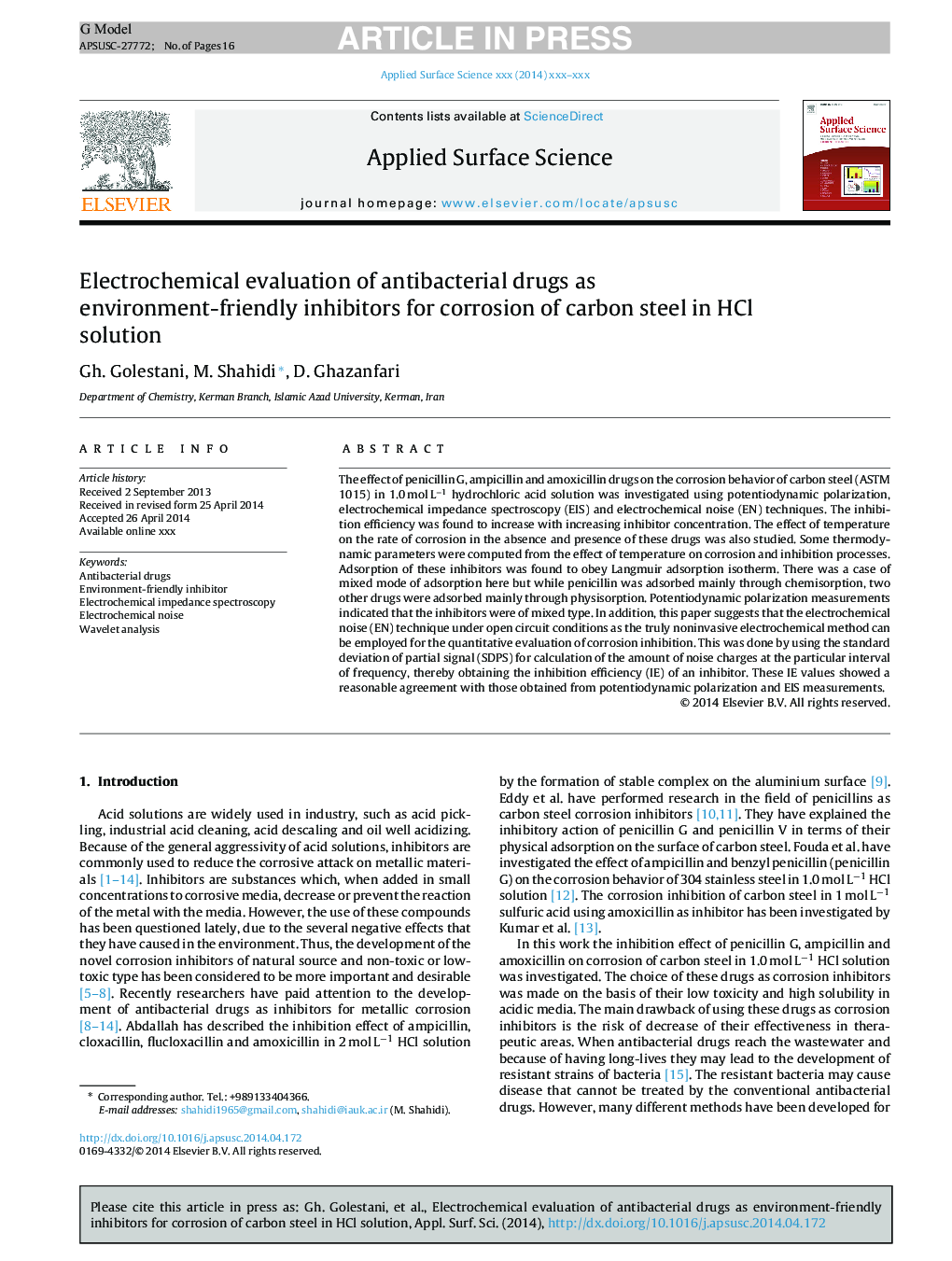| Article ID | Journal | Published Year | Pages | File Type |
|---|---|---|---|---|
| 5350094 | Applied Surface Science | 2014 | 16 Pages |
Abstract
The effect of penicillin G, ampicillin and amoxicillin drugs on the corrosion behavior of carbon steel (ASTM 1015) in 1.0 mol Lâ1 hydrochloric acid solution was investigated using potentiodynamic polarization, electrochemical impedance spectroscopy (EIS) and electrochemical noise (EN) techniques. The inhibition efficiency was found to increase with increasing inhibitor concentration. The effect of temperature on the rate of corrosion in the absence and presence of these drugs was also studied. Some thermodynamic parameters were computed from the effect of temperature on corrosion and inhibition processes. Adsorption of these inhibitors was found to obey Langmuir adsorption isotherm. There was a case of mixed mode of adsorption here but while penicillin was adsorbed mainly through chemisorption, two other drugs were adsorbed mainly through physisorption. Potentiodynamic polarization measurements indicated that the inhibitors were of mixed type. In addition, this paper suggests that the electrochemical noise (EN) technique under open circuit conditions as the truly noninvasive electrochemical method can be employed for the quantitative evaluation of corrosion inhibition. This was done by using the standard deviation of partial signal (SDPS) for calculation of the amount of noise charges at the particular interval of frequency, thereby obtaining the inhibition efficiency (IE) of an inhibitor. These IE values showed a reasonable agreement with those obtained from potentiodynamic polarization and EIS measurements.
Keywords
Related Topics
Physical Sciences and Engineering
Chemistry
Physical and Theoretical Chemistry
Authors
Gh. Golestani, M. Shahidi, D. Ghazanfari,
